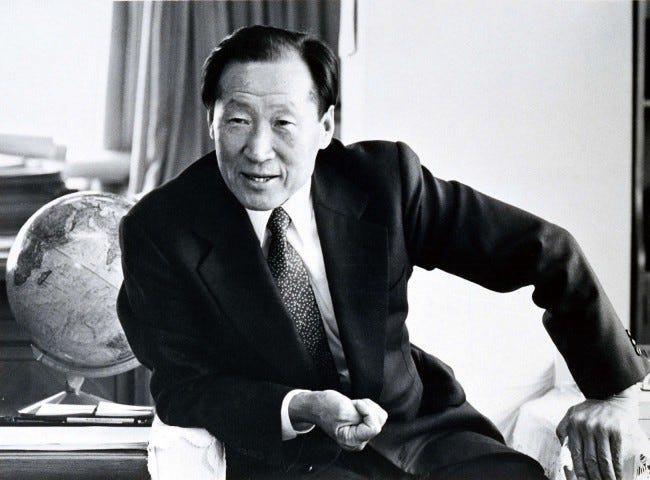Will, Skill, and Structure
Why do some people get so much done while others spin their wheels and stall out?
It often comes down to a simple framework: Will, Skill, and Structure.
Let me show you what it looks like.
On March 25, 1913, John H. Patterson stood on the roof of his National Cash Register (NCR) factory in Dayton, Ohio, watching the Great Miami River rise.
He had a bad feeling that the levees wouldn’t hold. So he climbed down, inspected them himself, and confirmed the worst: a massive flood was coming.
Patterson didn’t wait for permission.
He called an emergency meeting with his managers and foremen. He grabbed a red crayon and literally crossed out the org chart, saying, “I now declare this company out of commission. I proclaim the Citizens Relief Association.”
By 7:30 a.m., the company had stopped making cash registers. But every team had a mission:
The kitchen staff was buying food and baking bread.
Buyers were sourcing blankets and dry clothes.
And the carpenters who made cash drawers? They did something amazing. They started building rescue boats using whatever wood they had, even though they’d never built a boat.1
By noon, they’d produced their first boat. Soon, they were turning out a new one every 9 minutes. Over the next few days, they built nearly 300 boats and used them to rescue thousands of people stuck in the flood.2
That’s what it looks like when Will, Skill, and Structure3 all line up.
Will: The Drive to Act Before the Path Is Clear
Patterson had the will. He acted quickly, before anyone else—and with incomplete information.
That’s a key trait among entrepreneurs: they don’t wait for full certainty. They move first and refine as they go. But he didn’t just act, he organized action.
Will shows up as curiosity. It thrives on urgency, and a bias toward action.
Chung Ju-yung, the founder of Hyundai, was that kind of leader too. After WWII and the Korean War destroyed his businesses, he took a manual labor job to survive. One problem: the workers’ sleeping quarters were infested with bedbugs. They tried everything. They cleaned. They put the bed legs in bowls of water. Nothing worked.
So one night, after an exhausting shift, Chung and a co-worker stayed awake to study the bugs.
The bugs weren’t crawling up the bed legs. They were climbing the walls and dropping from the ceiling.
That’s will: the willingness to look harder. To stay awake through exhaustion just to figure out why.
Reflecting on that night, Chung later said:
“Even bedbugs think long and hard, and use every bit of energy they have to achieve their goal, and ultimately they succeed… If these bedbugs can do it, why can’t we men do it?”4
The best entrepreneurs see what others ignore and act when others would quit.
Skill: The Patterns You Know and How You Use Them
Most successful entrepreneurs don’t just have a bias towards action. They build up a base of skills and pattern recognition even if it’s in a different field from the one they’re entering.
James Dyson is a perfect example.

In his memoir, Dyson explains how his first product, a reimagined wheelbarrow called the Ballbarrow, taught him about injection molding, plastic spheres, and manufacturing. That knowledge later helped him invent the Dyson vacuum. But the real breakthrough came when he was trying to fix a noisy, inefficient paint-exhaust system. He started studying and then installing cyclone fans—the kind used in sawmills—and that later became the core of his bagless-vacuum design.
Skill is more than simple expertise. It’s about pattern recognition and the ability to adapt what you know to solve new problems.
Structure: The Systems That Let You Scale
Most people aren’t great at all three. They might have will and skill, but no structure—so things stay chaotic. Or they’ve got skill and structure, but not the will to take real risks. Or they have the will, but not the team or experience to execute.
Patterson didn’t create new departments to attack the crisis. He had the will, his workers had the skill, and together they repurposed the structure.
Most entrepreneurs, if they want to grow, eventually need to hire structure-minded people—operators and people who are good at turning good ideas into reliable execution.
Bottom Line:
If you’re feeling stuck, ask yourself:
Do I have the Will to take the first step—before I have it all figured out?
Do I have the Skill or pattern base to learn what’s needed fast?
Do I have the Structure to make this thing repeatable and real?
You don’t need all three today.
But once you know what’s missing, you know what to fix next.
Photo credit: University of Dayton, "Dayton residents rescued by boat from flood waters" (1913). Photographs and Postcards. 4. https://ecommons.udayton.edu/archives_flood_images/4
Nelson, Otto. The Father of American Salesmanship: The Unfinished Autobiography of John H. Patterson. Washington, D.C.: Gateway Editions, 2023. pages 205-209
I heard the phrase “skill, will, and structure” on Cedric Chin’s podcast interview of Eric Nehrlich, although with a different application.
Chung, Ju-yung. Born of This Land: My Life Story. Translated by Kwang-Il Noh. Seoul: Gimm-Young International, 1998. pages 29-30. If you are interested in learning more, there’s a great episode of Founder’s Podcast that covers this book.



